The Anatomy of a Strong Female Character
Guest blog by Priya Chhaya
She is strong.
She isn’t a prop. Not a caricature. She isn’t a flat outline of a woman you understand in a single sentence.
Her strength is in her weakness. Her strength is in her ability to make her own choices.
Her strength is in navigating the unexpected, not merely having power, holding power, or having physical power.
She is strong because she is real.
I’ve been thinking about this for a long time. What exactly is the anatomy of a strong female character? What is it that pulls me in, makes me want to read more—and in some cases, what makes me identify with her?
It doesn’t matter if she is the central figure in the story, or just part of the supporting players. There has to be something tangible that draws me in to make broader relationships and the narrative click. A strong female character has to have a way with words, be able to kick ass, recognize her flaws and embrace them, and use whatever power she has in a way that makes sense for who she is and the path she is walking.
Having A Way With Words
“Had I been in love, I could not have been more wretchedly blind! But vanity, not love has been my folly. Pleased with the preference of one and offended by the neglect of the other, on the very beginning of our acquaintance, I have courted prepossession and ignorance, and driven reason away, where either were concerned. Till this moment I never knew myself.”
~ Pride and Prejudice by Jane Austin
 In anguish, in self reprobation, the words of this particular strong female character can tell us a lot about the woman who is speaking them. Just pages before she had unleashed this very same forthrightness with disdain, turning down a proposal that was both unwelcome, and unexpected. But here—in the bastion of her private rooms where she has the opportunity to let herself down easy—she is full of self reflection, and with a stroke of a pen, looking at the other characters in a new light. And so are we. Of course for me, Elizabeth Bennett is an example of a woman who stands apart (as many of Jane Austen’s women do), despite remaining boxed within the prescribed boundaries of propriety.
In anguish, in self reprobation, the words of this particular strong female character can tell us a lot about the woman who is speaking them. Just pages before she had unleashed this very same forthrightness with disdain, turning down a proposal that was both unwelcome, and unexpected. But here—in the bastion of her private rooms where she has the opportunity to let herself down easy—she is full of self reflection, and with a stroke of a pen, looking at the other characters in a new light. And so are we. Of course for me, Elizabeth Bennett is an example of a woman who stands apart (as many of Jane Austen’s women do), despite remaining boxed within the prescribed boundaries of propriety.
A strong female character is one who uses words to express herself, whether it is an expression of weakness, of love, or a rallying cry. It is more than the dialogue, rather it is the delivery, the way you can understand and recognize her thought process. When conversations between characters become more about style rather than substance everything falls apart.
A lot of the more modern female characters are “wise cracking” and “sassy,” able to dish it out to anyone who gets in her face. I will be the first to admit that I find a woman who is able to stand up for herself to be a lot more appealing than one who can’t, but sometimes having a way with words means more than being at the ready with a quippy phrase.
Kicking Ass And Taking Names
“I spread out my fingers, and the dark berries glisten in the sun. I give Peeta’s hand one last squeeze as a signal, as good-bye, and we begin counting. ‘One.’ Maybe I’m wrong. ‘Two.’ Maybe they don’t care if we both die. ‘Three!’ It’s too late to change my mind I lift my hand to my mouth, taking one last look at the world. The berries have just passed my lips when the trumpets begin to blare.”
~ The Hunger Games by Suzanne Collins
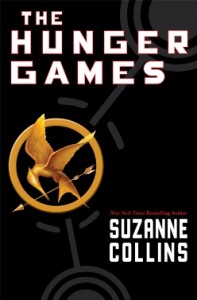 In the past few months the world has become enamored with one specific woman. She is dark, has a tortured past, and is able to invoke fury like no other on those who have wronged her. She isn’t exactly a role model, but she is strong and fights with conviction. Lisbeth Salander in the Girl with the Dragon Tattoo series is a woman who Kicks Ass.
In the past few months the world has become enamored with one specific woman. She is dark, has a tortured past, and is able to invoke fury like no other on those who have wronged her. She isn’t exactly a role model, but she is strong and fights with conviction. Lisbeth Salander in the Girl with the Dragon Tattoo series is a woman who Kicks Ass.
But being able to fight, to take down the names of your enemies, and seek retribution is not something that is limited to using your fists. Granted, some of my favorite women characters are ones who can beat down an opponent using a lightsaber (Mara, Leia, Jaina), or a stun gun (Stephanie Plum), but each of these women are effected by the violence. They do not see it as merely a means to an end—but also experience consequences for each life they take. I remember in one of the early mystery books by Sue Grafton, Kinsey Millhone shoots an attacker from inside a garbage can. In the next book we see what comes after you kick ass—the fear, the gut wrenching guilt—all which propel her actions and her reactions in the next mystery.
In the passage above—after brawling in the arena young Katniss Everdeen is able to defeat the media juggernaut by taking her life into her own hands. With one single decision she stands defiant….and survives. A strong female character fights with a purpose, but like the real world also deals with the hesitation and doubt that comes with taking that stand.
Seeing the Flaws in the Mirror
She swallowed. She had never asked him how he felt. Because it hadn’t mattered. And it shouldn’t matter now; he’d murdered them. But her throat had that peculiar tightness that spoke of trapped water, and she could barely breathe for the tightness, because with breath would come tears….This had been his choice. And she had judged him by it.
~ Cast in Courtlight by Michelle Sagara
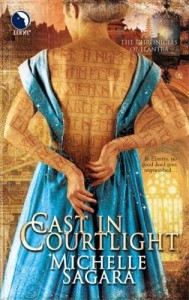 Every character in a novel is defined by their decisions, how they react to them, and how they deal with the consequences. If a strong female character is real she is uncertain. Despite needing to have a measure of confidence part of the “hero’s journey” is going through a maze of trials, a labyrinth where things don’t travel a path of absolute perfection. In the same vein, a strong female character needs to have some flaws, some weaknesses that affect that journey and those decisions.
Every character in a novel is defined by their decisions, how they react to them, and how they deal with the consequences. If a strong female character is real she is uncertain. Despite needing to have a measure of confidence part of the “hero’s journey” is going through a maze of trials, a labyrinth where things don’t travel a path of absolute perfection. In the same vein, a strong female character needs to have some flaws, some weaknesses that affect that journey and those decisions.
Kaylin Neya, the heroine of Michelle Sagara’s Chronicles of Elantra is a woman who lives on a precipice between her past and its connection to her very, real present. Marked (with swirly designs on her arms and legs) by a group known as the “old ones” she has power that she neither fully understands nor fully embraces.
However, in every book in the series Kaylin is confronted with that power and that past—all beginning with a shocking murder by someone she had trusted and depended on, someone who she is forced to trust and work with on a daily basis. This wound, this blindness that prevents her from seeing the full picture impacts every choice she makes. As the series goes on Kaylin learns to use that past to her advantage to make her stronger and more certain of her place in Elantra.
Having the Power and Using the Power
And for the first time since she’d found Skywalker and his crippled X-wing floating in deep space, she let herself give in to the voice swirling through her mind. With all her strength, she swung her lightsaber and cut him down…it was done. She had fulfilled the Emperor’s last command. And she was finally free.
~ The Last Command by Timothy Zahn
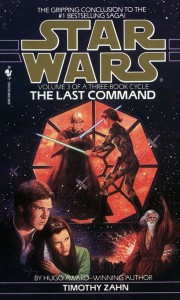 Many of the books we read deal with people having power—Political Power, Magical Power, Physical Power, Psychological Power. All of it effects the balance of the narrative, and for female characters the woman with power are often cast as evil, unyielding harlots—the bad guy. But a strong female character is one who can use her power and still be multi-faceted—and if she is a bad guy, she has motivations that are understandable, if not twisted.
Many of the books we read deal with people having power—Political Power, Magical Power, Physical Power, Psychological Power. All of it effects the balance of the narrative, and for female characters the woman with power are often cast as evil, unyielding harlots—the bad guy. But a strong female character is one who can use her power and still be multi-faceted—and if she is a bad guy, she has motivations that are understandable, if not twisted.
For characters like Mara Jade, power reveals itself in the form of stealth. Living under the radar, away from connections and relationships, being able to use an element of surprise against the Emperor’s enemies. As we know throughout the Thrawn Trilogy she holds the power to destroy our hero, but time and time again she stays her hand, because of loyalty, honor, and necessity. While the Emperor’s Last Command is certainly her personal cheerleader, it is her ability to use her power at the right time that determines her worth.
Finding The Perfect Recipe
Growing up I read all the time. I read in bed, in front of the TV, at the dinner table. I was one of those kids who would fall asleep with my face on the book and a spoon in my hand. I read anything I could get my hands on—Nancy Drew, Agatha Christie, Sweet Valley High, Jane Eyre, Emma—but never science fiction and fantasy.
All that changed during the Blizzard of ’96 when a friend sat me down and made me watch the original Star Wars trilogy. The next day she handed me a lined piece of paper where she had written out all of the Star Wars books to date with a handy rating guide, and a copy of Heir to the Empire by Timothy Zahn. You could say, in a sense, that she introduced me to Mara Jade.
As an impressionable eighth grader Mara wasn’t the first “strong” woman that I read about, but there was certainly something about who she was, and how she carried herself—both through exhibitions of loyalty and honor and quick thinking in a fight that makes her one of my all time favorite female characters.
In short, strength, as I see it, comes from an authors ability to create a fully realized character, one who leaps away from stereotypes and clichés to make an impression on the readers mind. No matter the genre, no matter the role in the story.
A quick caveat. These characteristics do not only apply to women characters that are presumed to be good guys, or perfect role models. I believe that a strong woman character can also be a three-dimensional villain (for example Cersei Lannister).
Characters like Mara are not that hard to come by. For every trusty sidekick you have a Jane Eyre. For every love interest, you stumble upon an Arya Stark. When being confronted with a one dimensional dark woman of power, I turn to Hermione Granger. And for every romanticized heroine that can do no wrong I look to Stephanie Plum.
The anatomy of a strong female character is not, of course limited to the factors I listed above, but each of those pieces are elements in a larger recipe that emphasizes that the stories of women are worthy in their own right.
Priya Chhaya is a historian who loves the written word. When she’s not reading anything she can get her hands on she is writing about the past and its intersection in our daily lives on her personal blog …this is what comes next.
In preparing this blog she asked her friends for recommendations of “strong” female characters—here are their responses: Lt. Uhura (Star Trek), Josephine March (Little Women), Claudia Kinkaid (From the Mixed-Up Files of Mrs. Basil E. Frankweiler), Polgara (Bellgariad), Harimad-Sol (Blue Sword), Mary Russell or Kate Martinelli (Books by Laurie King), Anna Quibler (Forty Signs of Rain), Moon Very Thin (Emma Bull’s Silver and Gold), Lyra (His Dark Materials), Tenar/Arha, (The Tombs of Atuan), Meg (A Wrinkle in Time), Antonia Shimerda, (My Antonia), Sissy Hankshaw (Even Cowgirls Get the Blues), Charlotte (Charlotte’s Web)
- How To Ride Rise of the Resistance - January 28, 2020
- Terrio and Rejwan Talk The Rise of Skywalker - December 23, 2019
- Star Tours Updated For The Rise of Skywalker - December 21, 2019








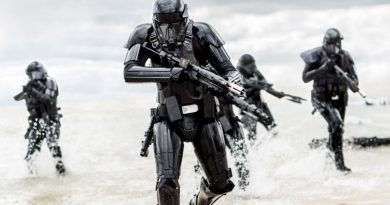
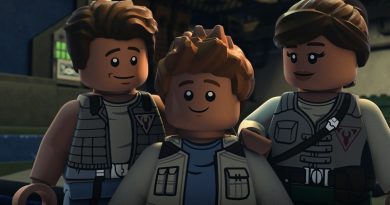

I like the connections. Thing is how does this apply in real life. Because I see many girls pretending to be characters they imagine as strong, but fists does not make one strong. Does battle make a strong female character?
My answer to that is an obvious “No”. Battle does NOT make a strong female character; “strong” does not equal “physical force”. That is certainly not what I read in this blog nor is it what I believe in real life.
It seems to me that Ms Chhaya has written eloquently that a strong female character is one who is so much more than a flat, one-dimensional cardboard cut-out. Strong characters need depth: layered in character, emotion, and just about every other attribute. Clearly, that is true both in fiction and real life.
I agree that there are girls who are getting the wrong message and “pretending”, as you said, to be “strong” through physicality. That’s the point. They are pretending based on the numerous flawed, superficial female characterizations that are being served up in films, television, books, and comics. What Ms Chhaya has done is very nicely pointing out that there are plenty of GOOD fictional heroines out there – if you look for them.
Let’s hope that those girls who only think they are strong have the opportunity to learn just how wrong they are (and how functionally weak their poorly-written “heroines” are) without serious consequences to their lives.
I enjoyed this blog very much and found it very informative. There are a lot more characters out there to read about…
I’m glad to see Chronicles of Elantra represented: from the very first page Kaylin stood out to me from other female characters because of her introspection and her flaws. She was vulnerable, and I could identify with that.
However, that’s exactly why I tend to dislike Mara Jade. I know I’m in the minority here, but her badassery itself makes her too simple. As the excerpt that you posted shows, Mara never doubts herself. She thinks too fast for that. She isn’t a good female character because she isn’t realistic. Maybe she’s a role model of strength, but she’s not well-rounded.
Wanted to respond to the comments:
@Dr. Gina To answer your question (like Stella) the answer is No! The thing I like about Mara, Katniss, Elizabeth Bennett, Jane Eyre etc is that each of them use their wits, intelligence and other characteristics to solve problems. I feel that strong women in real life are the same way–there is much more to being “strong” then your ability to be witty, or win a physical battle.
@Stella. Thank you for the comment! Well said.
@Cy I love the Elantra books. A co-worker started me on the series and now I find myself eagerly awaiting the next one. As for your thoughts on Mara, it is a fair assessment. She is a little too perfect at times, and I think I like Mara in Vision of the Future a smidge better than the Mara in the Thrawn Trilogy. At that point her character had been allowed to grow beyond the “cut adrift” Imperial assassin box. I picked that particular excerpt mostly because it illustrated how she had been holding back before–that despite believing that Luke had to die, she was able to hold off and use that power judiciously when it really mattered.
Thanks for reading!
this may be off subject, but I feel it is related: What is it about literature that has a phobia about mothers? Can you name me a good, strong, normal mother character? Perhaps this goes back to Greek Myths, the strongest goddess is Athena, goddess of war and wisdom… Most “romance” novels are extremely lacking in good older female role models for the heroine. Even Pride and Prejudice, Elizabeth’s mother is sort of a joke, a cariacature. Nowhere do we get her perspective, of having to secure the future of 5 daughters, which may not be easy at all in early 1800s England. many women ended up destitute widows or worse, even if they “marry well.”
This is what bothers me about Star Wars too, we have seen some of Leia’s strength of motherhood in the EU, but at the end she had to become a lightsaber wielding fighter chick to be “real” or “strong.” We know nothing about Mara’s mother. We also hear nothing from Padme’s mother and her reaction to that weird Jedi Anakin guy or anything else that happens in Padme’s life. Little Women does well, but Marme is a secondary character, the epitome of quiet strength and fortitude, doing one’s duty. It’s like a character is a good mother if she gives up her child – Mara had to leave Ben to keep him safe, Tenel Ka has to give up her kid too.
Addendum: Athena had no mother, she sprung completely grown out of her father’s head. So she has no association with any older, wise, strong or weak women / goddesses. Christianity has the Virgin Mary, yet again she raises her son and sees him put to death as an adult.
C.Bella
This is a little delayed in responding (sorry about that!), but, and I know there is a lot of controversy about this, but I find Molly Weasley to be an incredibly strong mother-like figure. She takes care of her family, worries a bit, but also is a huge part of the Order of the Phoenix, and is clearly capable of protecting her family in any way possible when necessary.
Priya
Yeah, remember Deathly Hallows where she goes after Bellatrix with guns blazing, as it were, because she was going after Ginny?
This makes me think that perhaps I should NOT have my character’s mother have died in her childhood after all.
Pingback:Hodge Podge: Aside the Fourth Wall in the Arena, the Stage, and a Hotel in Chelsea « …and this is what comes next
Pingback:Nobody Knows Where They Might End Up | ...this is what comes next